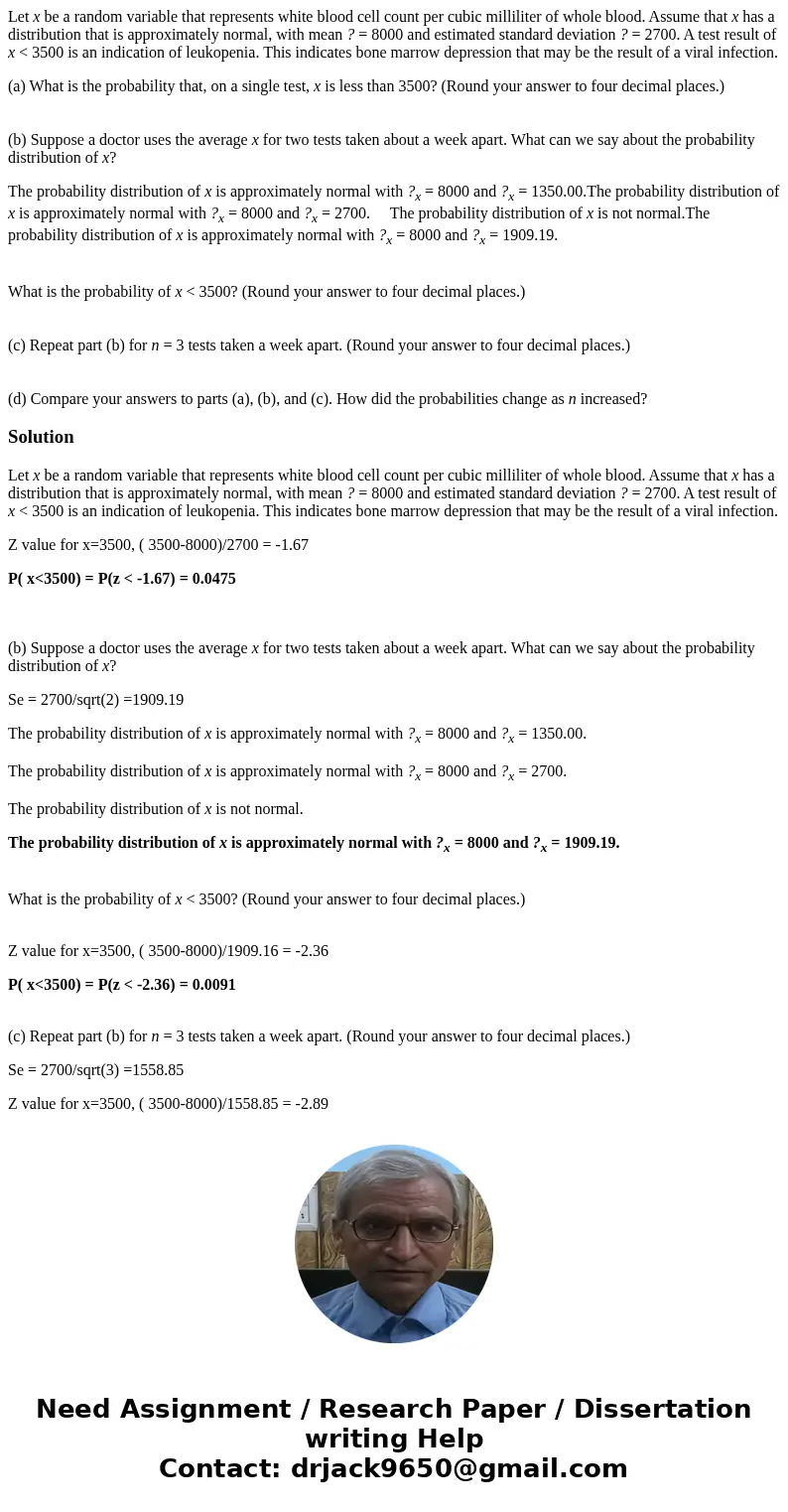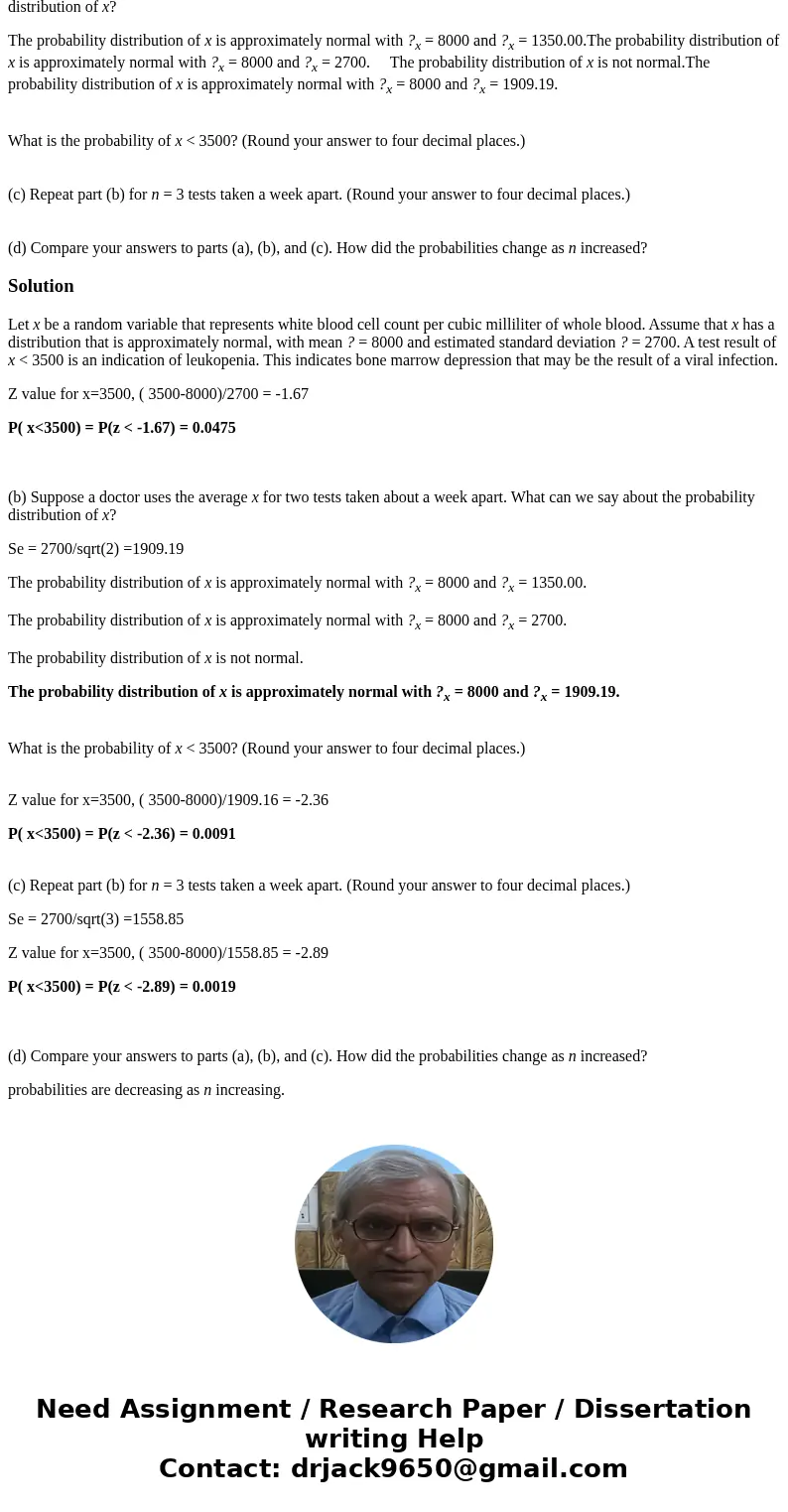Let x be a random variable that represents white blood cell
Let x be a random variable that represents white blood cell count per cubic milliliter of whole blood. Assume that x has a distribution that is approximately normal, with mean ? = 8000 and estimated standard deviation ? = 2700. A test result of x < 3500 is an indication of leukopenia. This indicates bone marrow depression that may be the result of a viral infection.
(a) What is the probability that, on a single test, x is less than 3500? (Round your answer to four decimal places.)
(b) Suppose a doctor uses the average x for two tests taken about a week apart. What can we say about the probability distribution of x?
The probability distribution of x is approximately normal with ?x = 8000 and ?x = 1350.00.The probability distribution of x is approximately normal with ?x = 8000 and ?x = 2700. The probability distribution of x is not normal.The probability distribution of x is approximately normal with ?x = 8000 and ?x = 1909.19.
What is the probability of x < 3500? (Round your answer to four decimal places.)
(c) Repeat part (b) for n = 3 tests taken a week apart. (Round your answer to four decimal places.)
(d) Compare your answers to parts (a), (b), and (c). How did the probabilities change as n increased?
Solution
Let x be a random variable that represents white blood cell count per cubic milliliter of whole blood. Assume that x has a distribution that is approximately normal, with mean ? = 8000 and estimated standard deviation ? = 2700. A test result of x < 3500 is an indication of leukopenia. This indicates bone marrow depression that may be the result of a viral infection.
Z value for x=3500, ( 3500-8000)/2700 = -1.67
P( x<3500) = P(z < -1.67) = 0.0475
(b) Suppose a doctor uses the average x for two tests taken about a week apart. What can we say about the probability distribution of x?
Se = 2700/sqrt(2) =1909.19
The probability distribution of x is approximately normal with ?x = 8000 and ?x = 1350.00.
The probability distribution of x is approximately normal with ?x = 8000 and ?x = 2700.
The probability distribution of x is not normal.
The probability distribution of x is approximately normal with ?x = 8000 and ?x = 1909.19.
What is the probability of x < 3500? (Round your answer to four decimal places.)
Z value for x=3500, ( 3500-8000)/1909.16 = -2.36
P( x<3500) = P(z < -2.36) = 0.0091
(c) Repeat part (b) for n = 3 tests taken a week apart. (Round your answer to four decimal places.)
Se = 2700/sqrt(3) =1558.85
Z value for x=3500, ( 3500-8000)/1558.85 = -2.89
P( x<3500) = P(z < -2.89) = 0.0019
(d) Compare your answers to parts (a), (b), and (c). How did the probabilities change as n increased?
probabilities are decreasing as n increasing.


 Homework Sourse
Homework Sourse